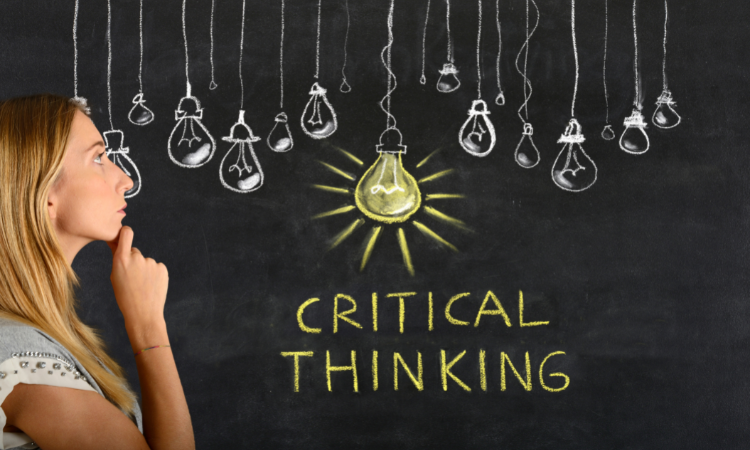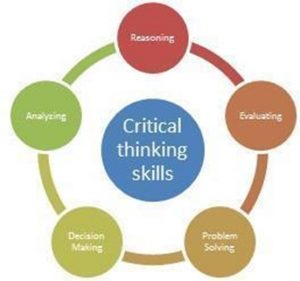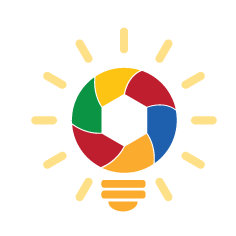Critical thinking and evaluation techniques

Using the Internet is probably a daily activity for many of you, but sometimes it’s such second nature we don’t stop to think about what underlies the information we use. We are now living in an era when information is widely available. Whenever people are faced with a question, their default response is ‘Google it’ rather than brainstorming for an answer. This contrasts sharply from what used to happen in the past whereby books were the main source of information. Nowadays, your critical thinking is a clue factor when analysing the digital information that surrounds us.
There are many definitions of critical thinking, in its most basic form, it is about being able to think for yourself. To be able to think critically, you need to be able to:
- Examine and evaluate information and arguments
- See patterns and connections,
- Identify and build meaningful information
Someone with critical thinking skills can:
- Understand the links between ideas.
- Determine the importance and relevance of arguments and ideas.
- Recognise, build and appraise arguments.
- Identify inconsistencies and errors in reasoning.
- Approach problems in a consistent and systematic way.
- Reflect on the justification of their own assumptions, beliefs and values.
Critical thinking skills

You probably already have practice in critical thinking from other areas of life, such as deciding on which phone or computer or car to purchase, where to live, or even what to wear on a particular occasion. In each situation, you probably don’t just do what someone else tells you to do, but you make a decision based on a range of factors. To apply critical ability in your digital skills means to use your capacity to find, evaluate, manage, curate, organise and share digital information. Moreover, this is the capacity to interpret digital information for academic and professional purposes, and to review, analyse and, re-present digital information in different settings. A critical approach to evaluating information in terms of its provenance, relevance, value and credibility. An understanding of the rules of copyright and open alternatives, e.g., creative commons; the ability to reference digital works appropriately in different contexts.
One of the most important elements of being online is the ability to be critically aware of where content comes from and who has authored it. You should be able to ask questions that will enable you to better understand context.
Related to your critical skill, it is important the capacity to collate, manage, access and use digital data in spreadsheets, databases and other formats, and to interpret data by running queries, data analyses and reports: your data literacy and the practices of personal data security. An understanding of how data is used in professional and public life; of legal, ethical and security guidelines in data collection and use; of the nature of algorithms; and of how personal data may be collected and used. You don’t need to be an expert or a professional of the data, but you have to be aware of its existence and the dangers that its misuse can cause you.
Another important factor is your capacity to critically receive and respond to messages in a range of digital media – text, graphical, video, animation, audio – and to curate, re-edit and repurpose media, giving due recognition to originators. A critical approach to evaluating media messages in terms of their provenance and purpose. An understanding of digital media as a social, political and educational tool, and of digital media production as a technical practice.
When it comes to evaluating digital content, you want to look for the best digital content available. For example, you want to avoid content that is simply an electronic version of the textbook without any added value. Digital literacy is about finding, evaluating, using, and creating digital content in meaningful and responsible ways. It requires thinking skills and technical abilities.
Taking into account that finding digital content about employing various search strategies to help source quality information, using multiple search engines to challenge personal filter bubbles using written, visual, and audio resources to navigate information in a variety of modes collecting a range of information that can then be evaluated to meet your requirements.
Other important point is that before you begin searching for relevant digital content, you must consider what is the inquiry question you are trying to answer or topic you are exploring the information you already have what information you need the type of information you need, for example, an overview, detailed analysis/research, or statistics how much information you need – what gaps are there in your knowledge.
In the present digital age, anyone can distribute any information on their websites, social media platforms, and other online forums. Unfortunately, those looking for parallel information do not really verify the authenticity of the information. As a result, propaganda and false information often gets construed as the truth thus causing decision-making problems. There is no standard for verifying the information.
How to make effective searching for digital content? You find better results using precise keywords and search strategies. Think of keywords from your inquiry question or topic, including synonyms, dictionaries and a thesaurus are useful for compiling a list of keywords. Look at the question or topic you want information on and choose the most relevant source for your search, for example, search engine(s) and/or online databases and try using different keywords and search techniques to broaden or narrow your search.
Common search techniques for the internet include:
- Exclude words from your search: Put – in front of a word you want to leave out. For example, jaguar speed – car.
- Search for an exact match: Put a word or phrase inside quotes. For example, “tallest building”.
- Search within a range of numbers: Put .. between two numbers. For example: camera €50.. €100.
- Combine searches: Put “OR” between each search query. For example, marathon OR race.
- Search for a specific site: Put “site:” in front of a site or domain. For example, site: youtube.com or site:.gov.
- Search for related sites: Put “related:” in front of a web address you already know. For example, related: time.com.
(Source: Refine web searches, Google)
Most information found on the Internet has a hidden reason behind it. The companies and writers who place the information on the Internet were probably trying to sell something to the readers. Others are propagandists looking to influence a reader’s mode of thinking. Critical thinking helps us to think through problems and apply the right information when developing solutions. It is important that the digital age learns to differentiate factual and fake information. Moreover, it is good that information comes from various online and offline sources so that it is accurate and has enough facts.
Asking questions is always a good idea. It will make you a better learner and thinker. Critical questioning means going deeper into your questioning and not just asking Who, What, When, Where, Why, and How, but instead asking more descriptive questions like “Who benefits from this?” “What is getting in the way of action?” “Why has it been this way for so long?” or “How can we change this for our good?”
As says Jesse R. Sparks:
“We must develop the digital information literacy skills necessary to evaluate the veracity, relevance, credibility and argument quality of information to effectively learn, problem solve and make decisions in today’s world.”

